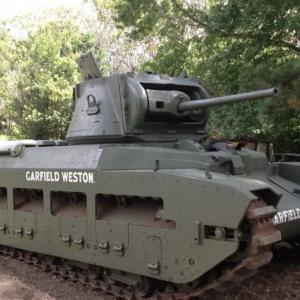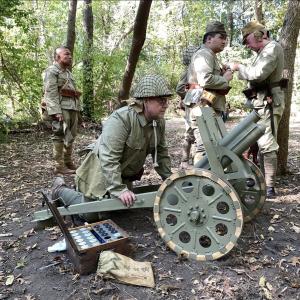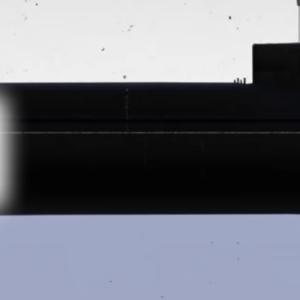
Operation chastise
Operation Chastise, better known as the Dambuster Raid, was one of the most daring and innovative air operations carried out during the Second World War. Undertaken by the Royal Air Force’s No. 617 Squadron on the night of May 16–17, 1943, the mission targeted key German dams in the Ruhr Valley, aiming to damage the industrial heartland of Nazi Germany. The operation was conceived as a way to strike a psychological and material blow to German industry, specifically its water and hydroelectric infrastructure, which was vital for powering factories and supporting wartime production.
The genesis of the mission came from British engineer Barnes Wallis, who proposed that key infrastructure in the Ruhr region—particularly large dams—could be critically damaged with specially designed explosive devices. Wallis developed what became known as the “bouncing bomb,” a cylindrical weapon that would skip across the surface of the water, avoiding protective torpedo nets, and detonate at the base of dam walls underwater. The hydrodynamic pressure from the explosion would maximise damage, ideally breaching the structure and releasing a torrent of water. While the physics of the bomb were sound, its development was a complex process that required both mechanical innovation and new aerial tactics.
To deploy these weapons effectively, Wallis needed an aircraft capable of flying low and delivering the bomb with high precision. The Avro Lancaster, already in service with the RAF, was selected as the platform for the raid due to its large bomb bay, long range, and adaptability. However, extensive modifications were necessary to prepare the aircraft for this unique mission. The most visible change was the removal of the standard bomb bay doors to make room for the cylindrical bouncing bomb, officially known as “Upkeep.” This bomb was 60 inches long and 50 inches in diameter, and it weighed about 9,250 pounds. Since it could not be carried inside a closed bomb bay, it was slung beneath the fuselage in an open cradle.
To give the bomb its crucial backspin—essential for it to skip across the surface of the water and to help it roll down the dam wall on impact—a specially designed hydraulic motor was installed in each modified Lancaster. This motor spun the bomb at roughly 500 revolutions per minute before release. The backspin also stabilised the bomb’s trajectory during flight and ensured it stayed close to the dam wall after hitting the water. Because the bomb was carried externally and generated considerable aerodynamic drag, the aircraft’s top speed was reduced, making low-level flight and evasive maneuvers more difficult.
Additional changes were made to the Lancaster’s structure and instrumentation. A new bombsight was required since traditional high-altitude sights were useless for such low-level delivery. Instead, the crews used a simple yet ingenious sighting system developed specifically for the mission: two angled wooden posts with crosshairs mounted on the cockpit frame. When the two towers on the dam appeared aligned between the crosshairs at a fixed distance apart, the aircraft was in the correct position to release the bomb. Determining the correct altitude was equally critical. To solve this, engineers installed two downward-pointing spotlights beneath each aircraft—one under the nose and one under the fuselage. When the two light beams converged into a single spot on the surface of the water, the bomber was exactly 60 feet above the target. This method allowed pilots to maintain the precise height needed for the bomb to function properly, even in darkness.
The weight and balance of the aircraft were also adjusted to accommodate the heavy bomb. Much of the internal armor and equipment was removed to reduce weight and to compensate for the external payload. This included some of the aircraft’s defensive armament, making them more vulnerable to enemy fire. The mid-upper turret was often removed entirely, and in some cases, the front turret was manned by a single gunner rather than a full crew. These trade-offs underscored the mission’s high-risk, high-reward nature: success depended on stealth, speed, and precision more than on heavy defense.
In tandem with these engineering innovations, the RAF assembled and specially trained a new unit to carry out the mission: No. 617 Squadron. This group was composed of some of the most skilled pilots and crew in the service, and they underwent an intense and secretive training regimen focused on low-level flying, navigation, and precision bombing. The pilots practiced over British reservoirs, flying at night just feet above the water to simulate the conditions they would face in Germany. This phase of the operation demanded not only physical skill but also psychological endurance, as even minor errors in timing, height, or direction could result in mission failure—or fatal crashes.
The primary targets of the operation were the Möhne, Eder, and Sorpe dams, all of which served both industrial and civilian purposes. The Möhne and Eder dams were conventional gravity dams, making them susceptible to Wallis’s bouncing bombs. The Sorpe dam, on the other hand, was an earthen embankment, requiring a different bombing approach that would involve diving runs and conventional high-explosive bombs dropped individually. The mission’s success depended on extreme precision, as the bombs had to be dropped at exactly 60 feet, at a speed of around 230 mph, and at a precise distance from the dam wall—all while flying under enemy fire in darkness.
On the night of the raid, nineteen modified Lancaster bombers were dispatched in three waves. Each aircraft carried a single bouncing bomb. The crews flew from RAF Scampton in Lincolnshire across the North Sea and into occupied Europe at treetop height, a tactic that helped them avoid German radar and anti-aircraft defenses but made navigation and piloting extremely hazardous. Several aircraft were lost before even reaching the targets, due to both enemy fire and collisions with the unforgiving terrain.
The first target, the Möhne Dam, was attacked shortly after midnight. After several unsuccessful bombing runs, one of the aircraft, piloted by Wing Commander Guy Gibson—leader of the operation—scored a critical hit, breaching the dam and releasing millions of tons of water into the valley below. Gibson’s aircraft and others continued their runs even after the breach, drawing anti-aircraft fire to allow following crews a better chance of success. The resulting flood was catastrophic for the surrounding area, sweeping away bridges, power stations, and villages, and causing substantial damage to German infrastructure and morale.
The Eder Dam, similarly targeted, proved more difficult to approach due to the narrow valley that surrounded it. Nonetheless, the attacking crews managed to breach the dam after several attempts. The destruction unleashed another massive flood, further disrupting German logistics and electricity supplies. The Sorpe Dam, heavily protected and of a different construction, remained largely intact, as the bombers had difficulty causing a breach despite repeated attacks. Only minor damage was inflicted, limiting its strategic impact.
The cost of the operation was high. Of the nineteen aircraft that set out, eight were lost and 53 aircrew killed, with three captured. The loss rate was among the highest of any single RAF mission during the war, a testament to the operation’s danger and the bravery of the airmen involved. Despite this, the operation was declared a success by the British government and the RAF. It had inflicted significant damage to the German war effort, disrupted industrial production, and caused the diversion of thousands of German troops and laborers to repair the dams and associated infrastructure. Furthermore, it had a powerful psychological effect, demonstrating the ingenuity and resolve of the Allied forces.
From a strategic standpoint, the actual long-term effect on German war production was limited. The Germans repaired the Möhne and Eder dams relatively quickly using forced labor, and water supplies to the Ruhr were restored within months. Nevertheless, the raid served other purposes beyond mere destruction. It showcased a capability for precision attack and technological innovation. It also boosted British morale at a time when the war effort needed such symbolic victories. The pilots and crew of No. 617 Squadron became national heroes, and Guy Gibson was awarded the Victoria Cross for his leadership and valor during the mission.
The legacy of Operation Chastise endures not only because of its tactical daring but also due to its representation of wartime innovation and sacrifice. It demonstrated how ingenuity, careful planning, and exceptional skill could be harnessed to strike deep within enemy territory. The mission marked the beginning of No. 617 Squadron's illustrious career as a specialist unit within the RAF, later carrying out other precision bombing operations, including the use of Tallboy and Grand Slam bombs against key German infrastructure.
In the years following the war, the raid has been immortalised in books, films, and documentaries, most notably in the 1955 film “The Dam Busters,” which dramatised the operation and further entrenched its place in British popular memory. While some aspects of the mission’s effectiveness have been debated by historians, its symbolic importance remains undisputed. Operation Chastise stands as a striking example of creative military engineering, strategic audacity, and the human courage required to carry it out under extraordinarily perilous conditions.










